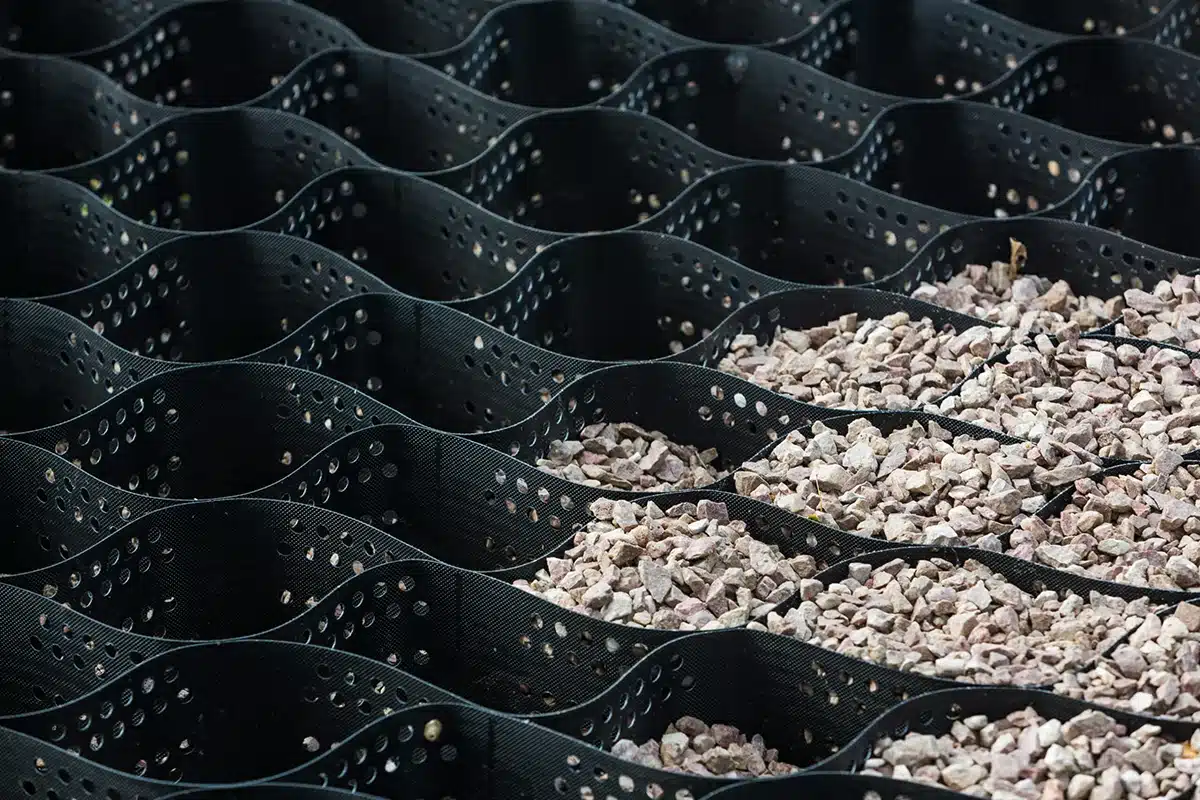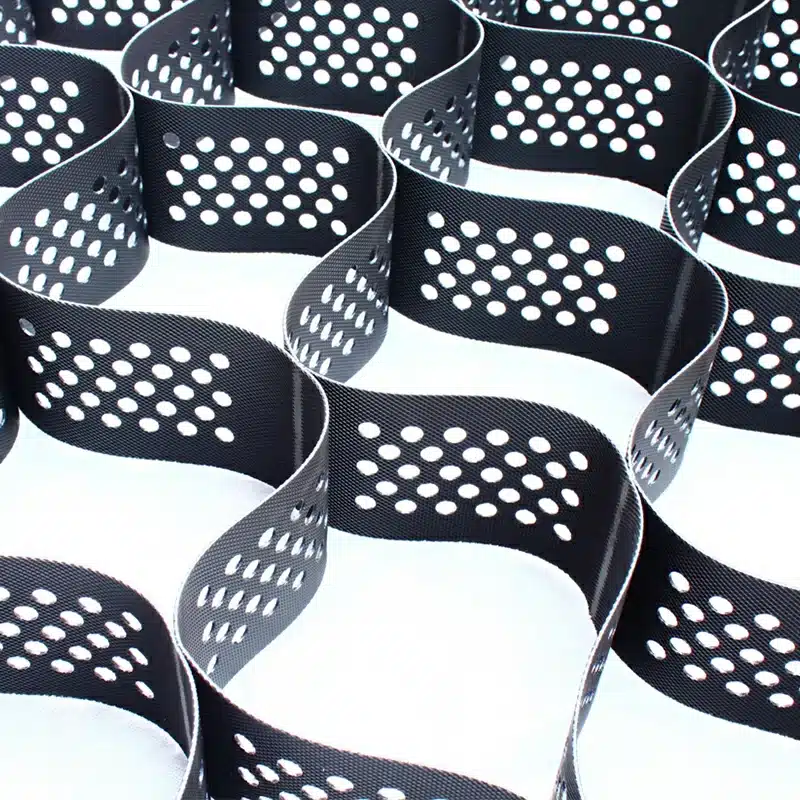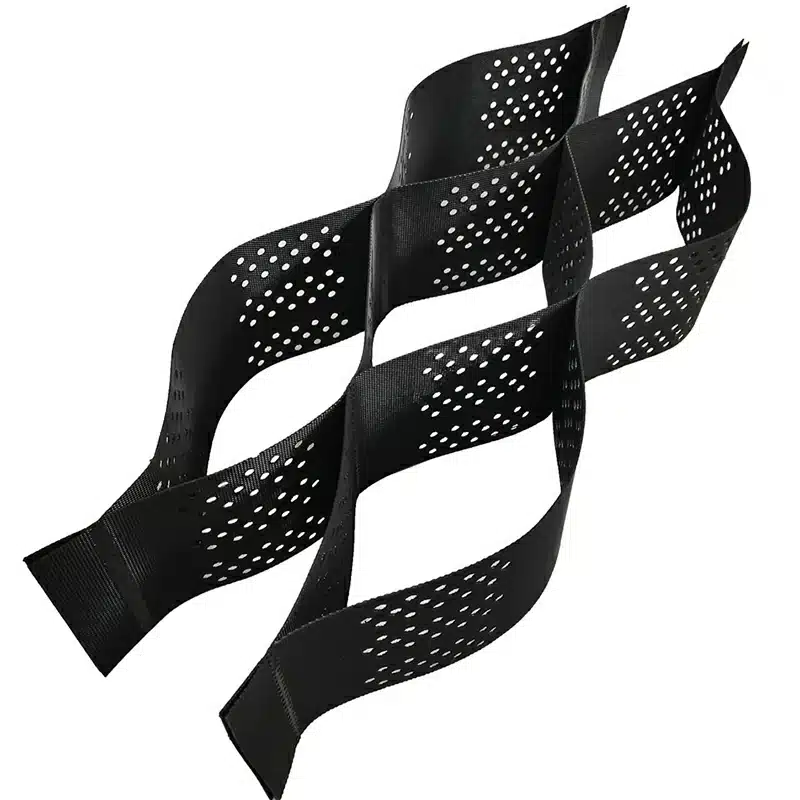+86-159 9860 6917
info@geofantex.com
geofantex@gmail.com
+86-400-8266163-44899
In the realm of civil engineering and construction, the innovation of geocell technology has revolutionized how professionals approach soil stabilization, erosion control, and sustainable infrastructure development. This technology, characterized by its unique design and versatility, offers a plethora of benefits that cater to a wide range of applications, from road construction to landscape architecture. This article delves into the core aspects of geocell technology, exploring its benefits, characteristics, diverse applications, and underlying concepts to shed light on its growing popularity and widespread adoption across various industries.

What are the benefits of geocells?
Geocells offer several benefits in various construction and environmental applications. Here are the key advantages:
- Quick Installation: Geocells are relatively easy to install, which can reduce construction time and labor costs. Their modular design allows for rapid deployment in large areas, making them an efficient solution for various civil engineering challenges.
- Soil Stabilization: Geocells provide excellent soil stabilization by confining soil within their cellular structure. This reduces soil movement, prevents erosion, and enhances the load-bearing capacity of the soil, making it ideal for roadways, embankments, and other infrastructure projects.
- Erosion Control: Geocells are effective in controlling erosion on slopes and embankments. By stabilizing the soil and reducing runoff, they prevent soil loss and maintain the integrity of the landscape.
- Load Distribution: Geocells help distribute loads evenly across a surface, reducing stress on underlying soils. This is particularly beneficial in areas with weak or unstable soils, as it prevents surface deformation and improves the durability of the structure.
- Environmental Benefits: Geocells are often used in green construction projects because they allow for the integration of vegetation. This not only enhances the aesthetic appeal but also contributes to ecological restoration by promoting plant growth and improving water infiltration.
- Cost-Effective: Geocells can reduce the need for expensive base materials like concrete or asphalt by enhancing the strength and stability of the existing soil. This can lead to significant cost savings in construction projects.
- Versatility: Geocells are versatile and can be used in a wide range of applications, including road construction, slope protection, retaining walls, and shoreline stabilization. They can be filled with various materials such as soil, gravel, or concrete, depending on the project requirements.
What are the characteristics of a Geocell?
Geocells, also known as cellular confinement systems, are engineered for soil stabilization and erosion control. They are made from high-density polyethylene (HDPE) or other polymeric materials and feature a honeycomb-like structure. Here are the key characteristics of a Geocell:
- Cellular Structure: Geocells consist of interconnected cells forming a three-dimensional honeycomb pattern. This structure confines and stabilizes the fill material (such as soil or gravel) within the cells, enhancing load distribution and reducing soil erosion.
- Material Composition: Most Geocells are made from HDPE, which provides excellent durability, chemical resistance, and flexibility. Other materials, such as polyester or other polymers, can also be used depending on specific application requirements.
- Permeability: Geocells allow water to flow through the cells, reducing hydrostatic pressure and preventing the buildup of water, which can lead to soil erosion.
- High Tensile Strength: The materials used in Geocells have high tensile strength, which enables them to withstand significant loads and provide structural support in various applications, including road construction and retaining walls.
- UV and Chemical Resistance: Geocells are designed to resist degradation from UV radiation and exposure to chemicals, making them suitable for long-term outdoor use.
- Lightweight and Flexible: Geocells are lightweight and easy to transport and install. Their flexibility allows them to conform to the natural contours of the terrain, making them suitable for various soil stabilization applications.
- Environmental Friendliness: Geocells reduce the need for traditional construction materials like concrete and asphalt, making them a more environmentally friendly option for soil stabilization and erosion control.
These characteristics make Geocells a versatile solution in civil engineering, particularly for applications like slope stabilization, load support, and erosion control.

What are the applications of Geocell?
The applications of geocell technology are impressively diverse, covering areas such as road and railway construction, slope protection, channel protection, and retaining walls. In road construction, geocells improve the load-bearing capacity of the underlying soil, reducing maintenance costs and extending the lifespan of the road. For slope protection, geocells prevent soil erosion and promote vegetation growth, enhancing the stability and aesthetics of the landscape. They are also used in water management systems, such as in the construction of channels and embankments, where their erosion control properties are invaluable. Additionally, geocells, which can be large or small and can be retracted for transportation, serve as an effective solution for retaining walls, offering structural stability and flexibility. This adaptability in size and ease of transportation significantly contributes to the wide-ranging utility of geocell technology in various engineering and environmental contexts.
What is the concept of geocell?
The concept of geocell technology is founded on the principle of soil confinement and stabilization, utilizing a form of rigid geosynthetic material consisting of intricately blended cells which have 3D honeycomb structures, with a desirable confining effect. By creating a three-dimensional matrix that encloses and compacts soil or other materials, geocells enhance the mechanical properties of the contained material, including strength, stiffness, and resistance to shear forces. This concept leverages the geosynthetic material’s intricate design to distribute loads evenly and reduce pressure on the underlying soil, effectively preventing soil deformation and erosion. The innovation lies in the ability to provide a high-strength, flexible, and environmentally friendly solution to a wide range of geotechnical and environmental challenges, capitalizing on the unique and effective structure of geocells.
Geocell technology represents a cornerstone in the field of civil engineering and construction, offering unparalleled benefits in terms of soil stabilization, erosion control, and sustainable infrastructure development. Its unique characteristics, including durability, flexibility, and environmental friendliness, make it suitable for a wide array of applications, from road construction to landscape architecture. By understanding the concept and diverse applications of geocell technology, professionals can leverage its potential to enhance project outcomes, reduce environmental impact, and pave the way for innovative construction and engineering solutions. As this technology continues to evolve, its role in shaping the future of construction and environmental sustainability becomes increasingly significant.



Get Free Sample
We’ll respond as soon as possible(within 12 hours)






















